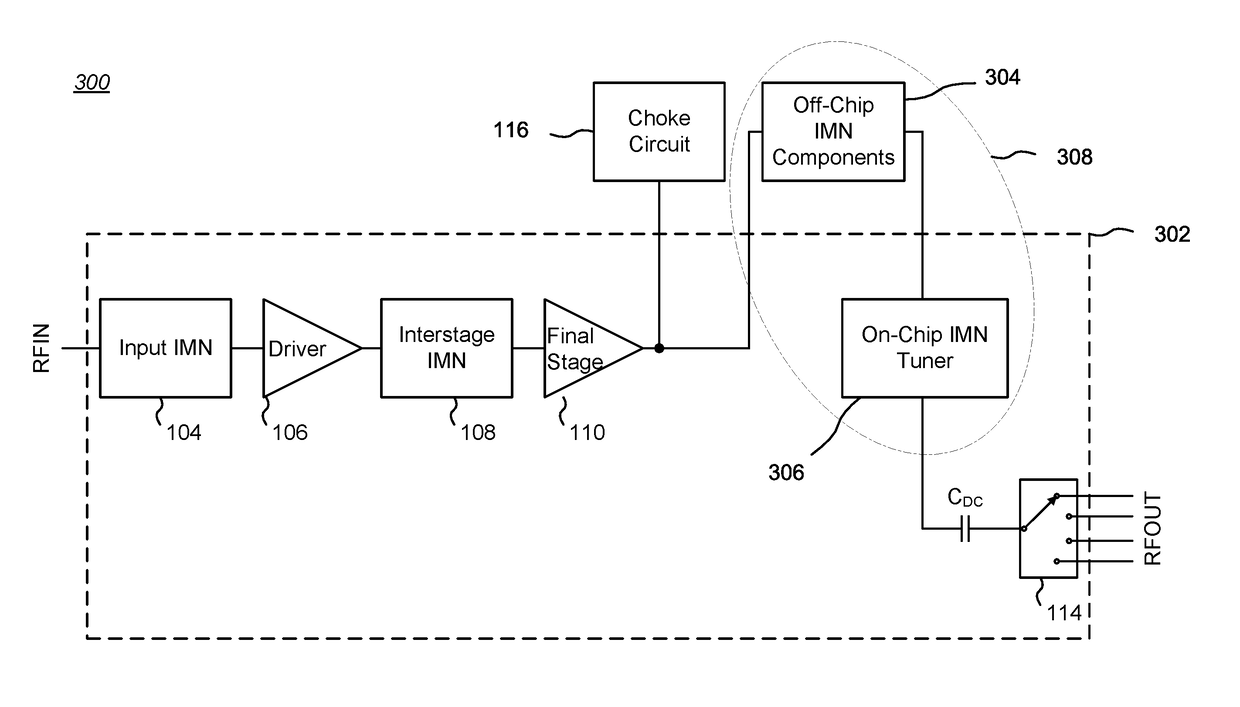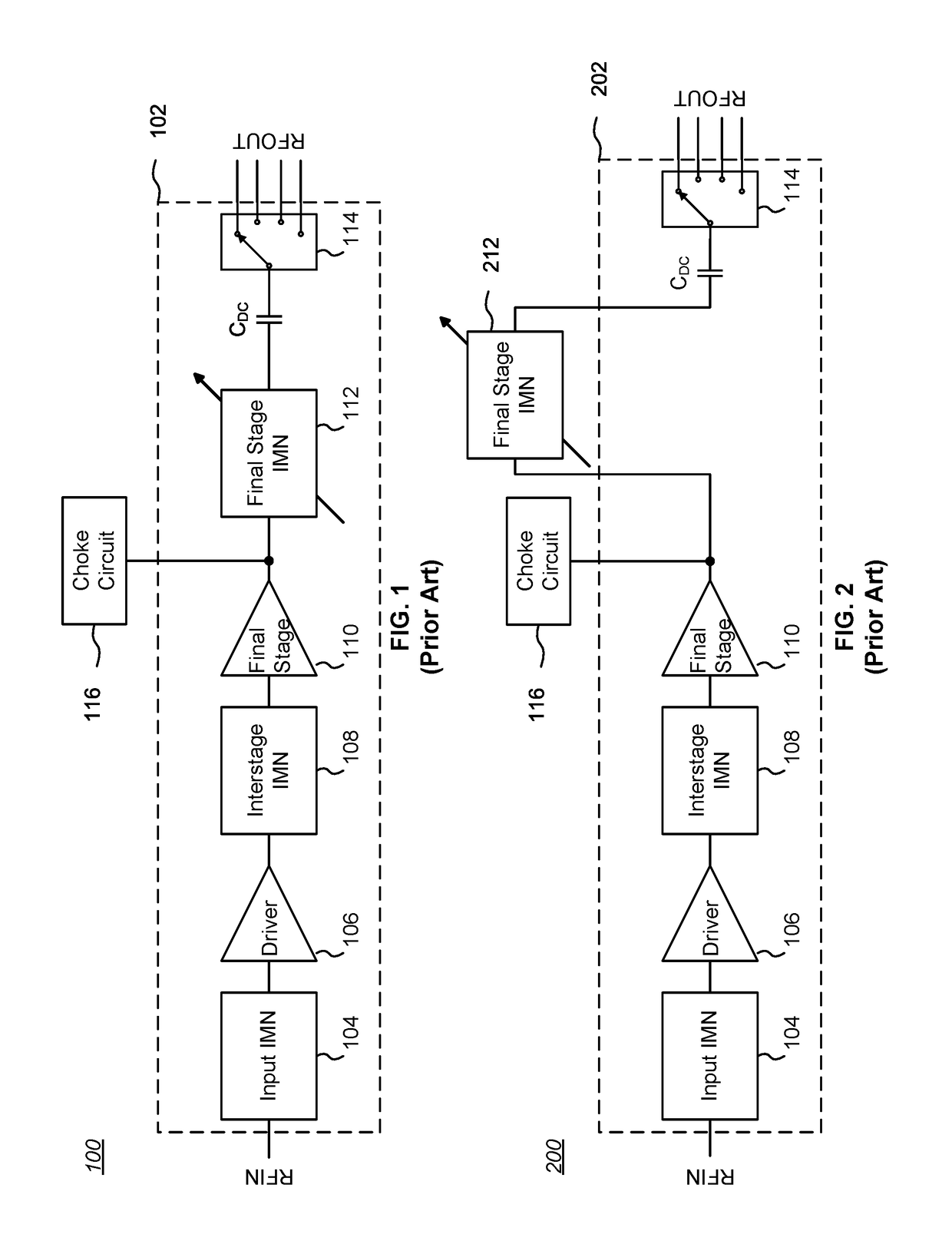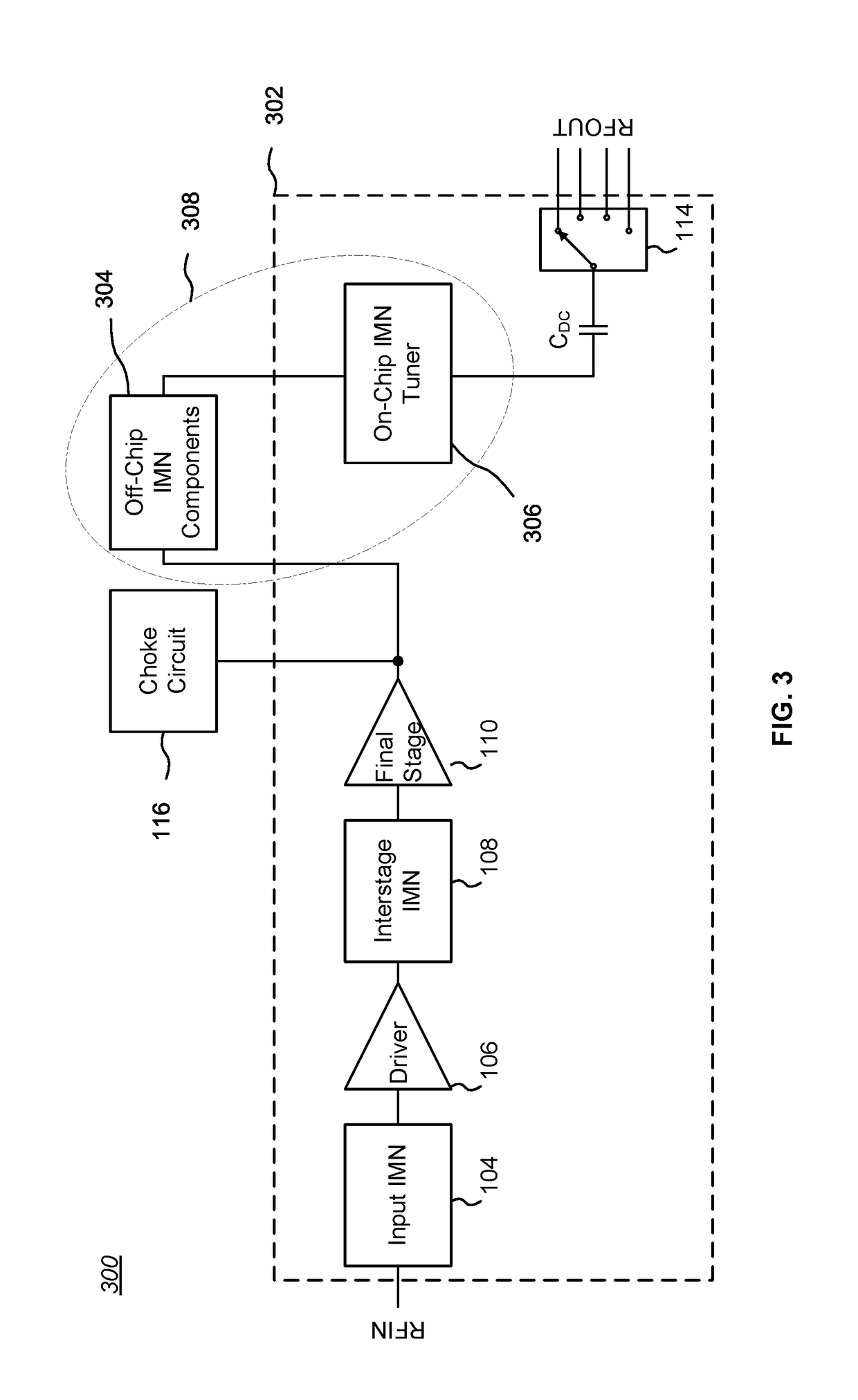RF switch with split tunable matching network
a technology of rf switch and matching network, which is applied in the direction of amplifier types, amplifiers, amplifiers with semiconductor devices/discharge tubes, etc., can solve the problems of reducing output power and efficiency, affecting the performance of the edge of the frequency band, and unable to meet all design requirements. , to achieve the effect of good power output and efficiency, good bandwidth, and good tunability and design flexibility
- Summary
- Abstract
- Description
- Claims
- Application Information
AI Technical Summary
Benefits of technology
Problems solved by technology
Method used
Image
Examples
Embodiment Construction
[0025]The present invention encompasses an improved architecture for a radio frequency (RF) power amplifier, impedance matching network, and selector switch that allows for good tunability and design flexibility over a desired range of frequency bands, good bandwidth, good power output and efficiency, low loss, easy adjustability, low cost, and faster time-to-market. One aspect of embodiments of the invention is splitting the functionality of a final stage impedance matching network (IMN) into two parts, comprising a base set of off-chip IMN components and an on-chip IMN tuning component.
[0026]Single-IC Split IMN Architecture
[0027]FIG. 3 is a block diagram of a RF power amplifier 300 having a general split IMN architecture. Similar to FIG. 1 and FIG. 2, an integrated circuit (IC) 302 includes several subcircuits that accept an RF input signal RFIN and output an amplified and impedance matched output signal RFOUT to a selected destination (e.g., one or more antennas, duplexers, band ...
PUM
 Login to View More
Login to View More Abstract
Description
Claims
Application Information
 Login to View More
Login to View More - R&D
- Intellectual Property
- Life Sciences
- Materials
- Tech Scout
- Unparalleled Data Quality
- Higher Quality Content
- 60% Fewer Hallucinations
Browse by: Latest US Patents, China's latest patents, Technical Efficacy Thesaurus, Application Domain, Technology Topic, Popular Technical Reports.
© 2025 PatSnap. All rights reserved.Legal|Privacy policy|Modern Slavery Act Transparency Statement|Sitemap|About US| Contact US: help@patsnap.com



